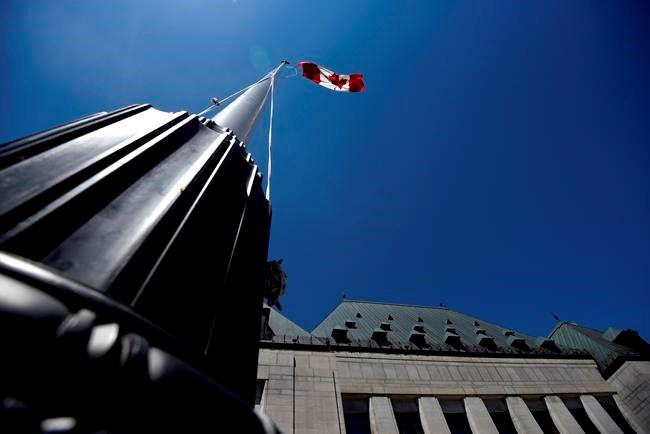OTTAWA — The Supreme Court of Canada says Parliament was entitled to abolish a long-standing jury selection procedure that some critics had denounced as discriminatory.
The newly released reasons shed light on the high court's decision from the bench last October upholding the constitutionality of legislation scrapping so-called peremptory challenges.
Peremptory challenges allowed lawyers for either side to dismiss a certain number of prospective jurors without an explanation.
They were abolished as part of changes to the jury selection process ushered in by the federal Liberal government to make juries more representative following the controversial acquittal of Gerald Stanley in 2018.
Stanley was charged with second-degree murder in the killing of Colten Boushie, a 22-year-old Indigenous man, and there were no Indigenous jurors on the panel that heard his case.
The new rules were contested by Pardeep Singh Chouhan, who faced a first-degree murder charge. His lawyers argued that eliminating peremptory challenges would result in less representative juries, infringing their client's right to be tried by an independent and impartial panel.
Though a majority of the Supreme Court affirmed the constitutionality of the legislative change, the justices provided several sets of reasons.
In writing for three members in the majority, justices Michael Moldaver and Russell Brown said the selection regime continues to provide the independent and impartial jury that each accused is owed under the Charter of Rights and Freedoms.
Moldaver and Brown said peremptory challenges heightened the perception of the accused that he or she had the benefit of a fairly selected tribunal.
"Accused persons routinely used peremptory challenges based on the way prospective jurors looked at them during the selection process, and there was some evidence that racialized accused used them to make room for jurors with diverse backgrounds."
However, the true value of the procedure was doubtful, Moldaver and Brown wrote.
"It is not possible to trace the impact of peremptory challenges on the verdict. More critically, peremptory challenges sat uneasily with other aspects of jury selection. They undermined the randomness of jury selection, a significant guarantor of jury independence and impartiality," Moldaver and Brown wrote.
"They also had a darker side which allowed for practices born of prejudice and stereotypes, which had palpable and well-documented effects on the composition of juries. Indigenous communities, in particular, have witnessed their disturbing effects."
Further, the charter right to be heard by an impartial tribunal does not entitle the accused to any particular procedure, they said. "The constitutionality of the jury selection process must be considered as a whole."
The abolition of peremptory challenges comes at a time of heightened public awareness of the role of racial prejudice in the criminal justice system, the justices noted.
But they cautioned: "Fair trial rights do not depend on the subjective perceptions of the accused, and absolute diversity on a jury is unattainable, as no group of 12 could ever represent the innumerable characteristics existing within our diverse and multicultural society."
Other opportunities remain for the parties in criminal trials to raise and address concerns about juror partiality and bias, Moldaver and Brown added.
The British Columbia Civil Liberties Association intervened in the high court case, contending that peremptory challenges protect jury diversity.
"We argued that jury diversity is critical because it limits racial bias and promotes jury impartiality," the association said Friday.
"But Canadian juries are not diverse. White, wealthy property owners are consistently overrepresented on our juries. Abolishing peremptory challenges will make our juries even less diverse and will violate the charter right to be tried by an impartial tribunal."
This report by The Canadian Press was first published June 25, 2021.
Jim Bronskill, The Canadian Press




